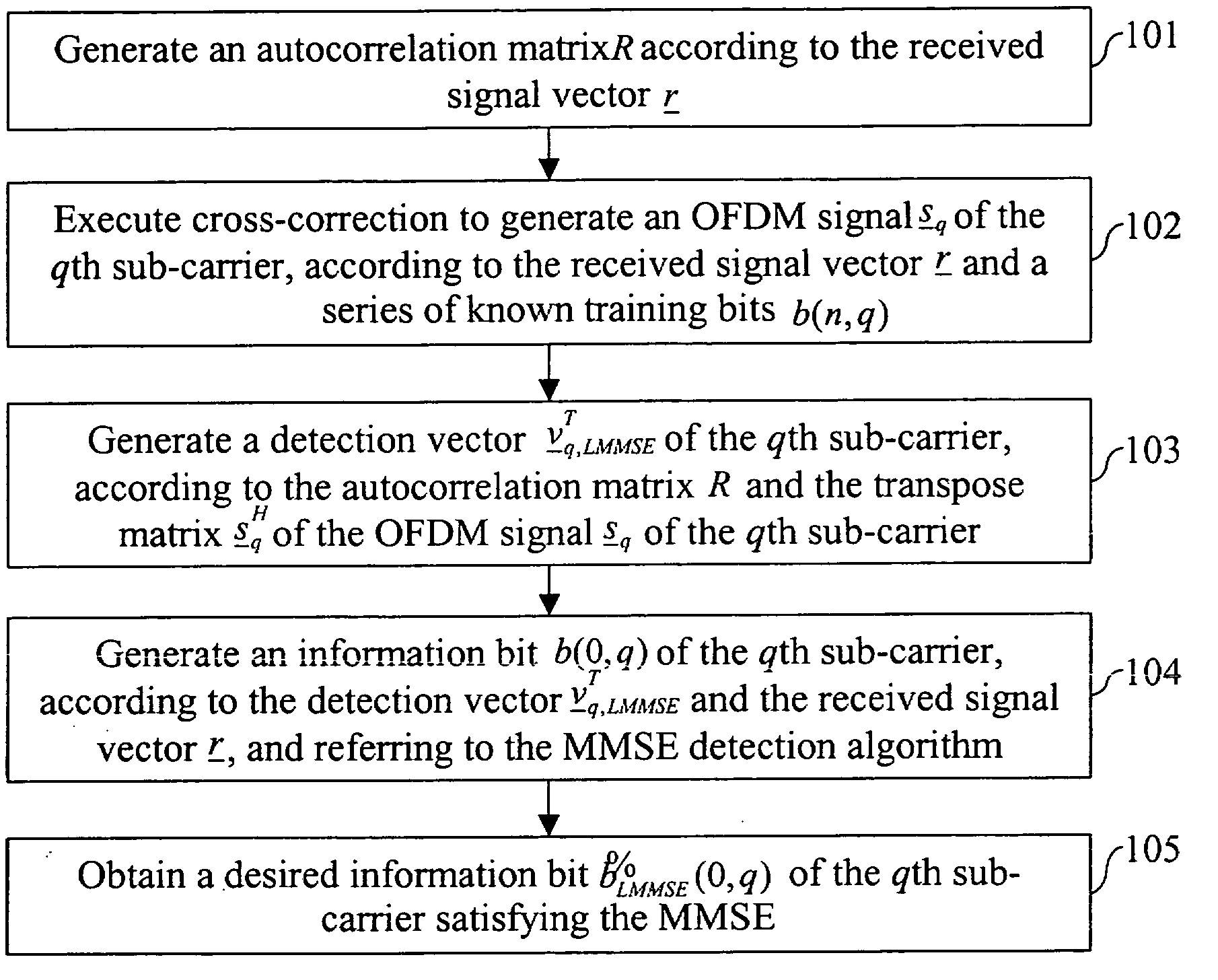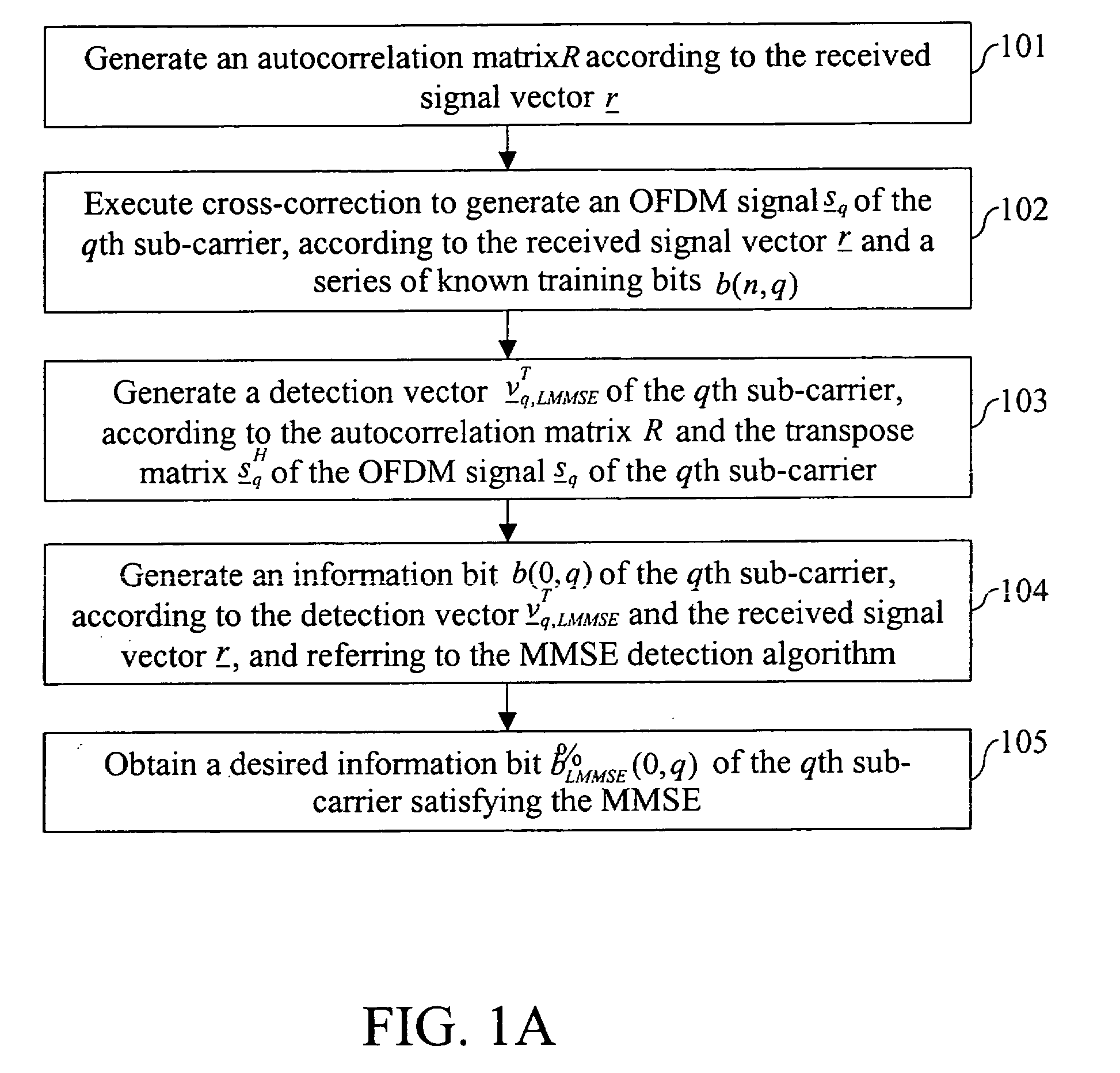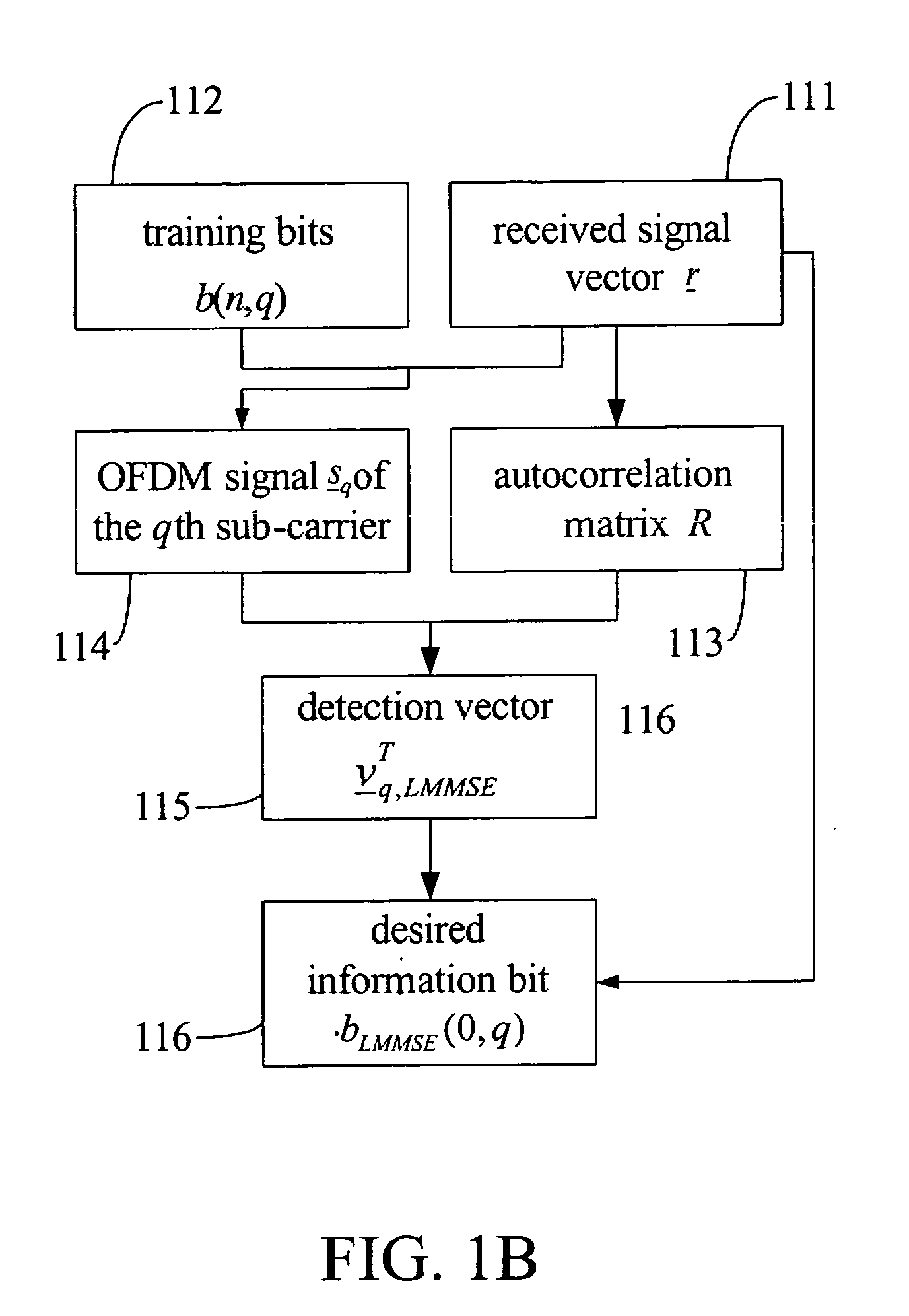Method for co-channel interference suppression in orthogonal frequency division multiplexing (OFDM) systems with multiple receiving antennas
a technology of orthogonal frequency division multiplexing and cochannel interference suppression, which is applied in the direction of digital transmission, secret communication, electrical equipment, etc., can solve the problems of limiting system capacity, serious distortion of received signals, undetectable strength variance of signals to be received, etc., and achieves the effect of enhancing the anti-cci ability of the ofdm wireless communication base station
- Summary
- Abstract
- Description
- Claims
- Application Information
AI Technical Summary
Benefits of technology
Problems solved by technology
Method used
Image
Examples
first embodiment
[0028]The first embodiment refers to FIG. 1A and FIG. 1B. FIG. 1A is a flow chart of detecting signals by the LMMSE and FIG. 1B is a block diagram 10 of detecting signals by the LMMSE, the embodiment comprises the following steps.
[0029]Generate an autocorrelation matrix R 113, according to the received signal vector r111 (Step 101), expressed by Equation (5) as follows.
R=E[rrH] (5)
[0030]Execute cross-correction to generate an OFDM signal sq 114 of the qth sub-carrier, according to the received signal vector r111 and a series of known training bits b(n,q) 112 (Step 102), expressed by Equation (6) as follows.
sq=E[r×b(n,q)] (6)
[0031]Generate a detection vector vq,LMMSET 115 of the qth sub-carrier, according to the autocorrelation matrix R 113 and the transpose matrix sqH of the OFDM signal sq 114 of the qth sub-carrier (Step 103), expressed by Equation (7) as follows.
vq,LMMSET=sqHR−1 (7)
[0032]Generate an information bit b(0,q) of the qth sub-carrier, according to the detection vector
second embodiment
[0034]The second embodiment refers to FIG. 2A and FIG. 2B. FIG. 2A is a flow chart of detecting signals by the MIC of the present invention and FIG. 2B is a block diagram 20 of detecting signals by the MIC of the present invention, the embodiment comprises the following steps.
[0035]Generate an autocorrelation matrix R 213, according to the received signal vector r211 (Step 201), expressed by Equation (10) as follows.
R=E[rrH] (10)
[0036]Execute cross-correction to generate an OFDM signal sq 214 of the qth sub-carrier, according to the received signal vector r211 and a series of known training bits b(n,q) 212 (Step 202), expressed by Equation (11) as follows.
sq=E[r×b(n,q)] (11)
[0037]Generate a detection vector vq,LMMSET 215 of the qth sub-carrier, according to the autocorrelation matrix R 213 and the transpose matrix sqH of the OFDM signal sq 214 of the qth sub-carrier (Step 203), expressed by Equation (12) as follows.
vq,LMMSET=sqHR−1 (12)
[0038]Generate a temporary estimated informati
PUM
 Login to view more
Login to view more Abstract
Description
Claims
Application Information
 Login to view more
Login to view more - R&D Engineer
- R&D Manager
- IP Professional
- Industry Leading Data Capabilities
- Powerful AI technology
- Patent DNA Extraction
Browse by: Latest US Patents, China's latest patents, Technical Efficacy Thesaurus, Application Domain, Technology Topic.
© 2024 PatSnap. All rights reserved.Legal|Privacy policy|Modern Slavery Act Transparency Statement|Sitemap



